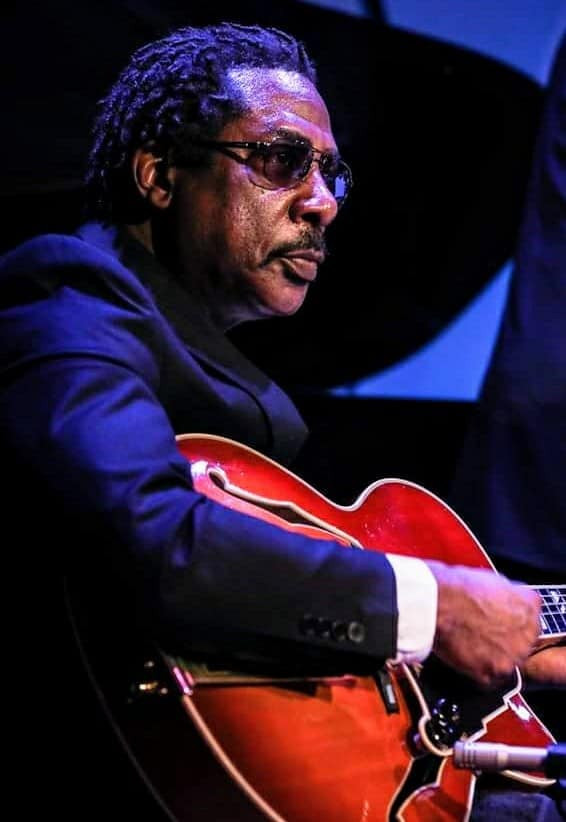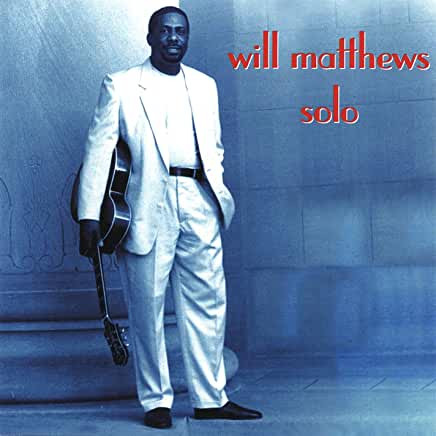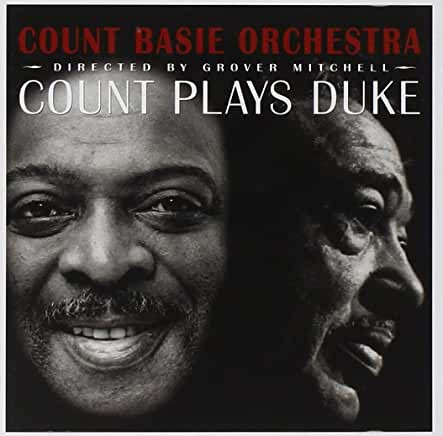JGT: How have you been navigating the COVID epidemic, and how has it reshaped your daily life as a Jazz Guitarist?
Considering the global pandemic, I’m doing surprisingly well. The most significant impact has been on my ability to travel and perform live jazz guitar for audiences. My routine shifted dramatically towards live streaming performances without a physical audience, virtual engagements via platforms like Zoom, and teaching jazz guitar online. What I truly miss is the irreplaceable energy of live performances with an audience.
 Will Matthews Jazz Guitar Performance
Will Matthews Jazz Guitar Performance
JGT: Could you recount the story of how you became a member of the legendary Count Basie Orchestra and began your journey as a professional jazz guitarist in this iconic ensemble?
My association with the Basie Orchestra began on January 15, 1996. My close friend, trombonist Tim Williams, who was already subbing in the orchestra, informed me about the then-guitarist, Charlton Johnson’s impending departure within six months. He suggested I start practicing my Freddie Green style comping, a cornerstone of the Basie sound. Interestingly, the Basie Orchestra typically hires musicians through referrals, not formal auditions.
Fortunately, I had previously performed with Carmen Bradford, a former vocalist for the orchestra, at a Kansas City Jazz Festival. Her recommendation, along with a demo tape I sent to Charlton Johnson, paved the way. I then received a call from Grover Mitchell, the new band director at the time. We discussed his vision for the orchestra, including his plans for a new rhythm section. He invited me to two rehearsals at Carroll’s Studios in New York on January 15th, emphasizing it was an audition. Despite my nerves, the rehearsals went positively, marking the beginning of my long-term role as a jazz guitarist with the Basie Orchestra.
JGT: For aspiring jazz guitarists, how would you describe the essence of comping in the classic Freddie Green style?
I often liken it to the left-hand technique of the great pianist and composer Erroll Garner. It involves using sparse voicings to suggest the harmony, typically played with quarter notes on each beat. The key is that it swings and feels rhythmically solid, demanding excellent rhythm and timing. For jazz guitarists aiming for that authentic Basie sound, mastering this rhythmic and harmonic foundation is crucial.
JGT: How did you personally learn the Freddie Green style of jazz guitar comping, and what resources did you utilize in your development?
My introduction to Freddie Green’s comping was quite serendipitous. A bandleader named Eddie Baker, who led the New Breed Orchestra, reached out to me. His band frequently played Basie charts. My wife, Bea Gray, had even played upright bass for his band in the late 70s. In the 80s, Eddie asked if I’d be interested in subbing. The very next day, he gave me a Basie Orchestra tape and said, “Listen to the guitar player. This is what I want you to do with my band.” That’s how I started learning—purely by ear, listening intently to recordings. There were no books or formal instructions involved, just immersion in the sound of Freddie Green’s jazz guitar.
JGT: Is the Freddie Green comping style something that can be taught in jazz guitar education, or is it more about developing an innate “feel” for it?
Absolutely, the Freddie Green style of jazz guitar comping can be taught. There’s nothing mystical about it. It boils down to understanding the fundamental “do’s and don’ts.” It’s about learning the right voicings, rhythmic approach, and understanding its role within the ensemble. While feel and groove are essential in jazz guitar, they can be cultivated through practice and a structured approach to learning the style.
JGT: What is your specific role and function as the jazz guitarist within the Count Basie band, and how do you contribute to the overall Basie sound?
My primary role is to be the rhythmic and harmonic anchor of the rhythm section. I see myself as the catalyst that binds the rhythm section together, establishing a solid tempo that the entire orchestra can reference. This involves carefully choosing guitar voicings that support the harmony without interfering with the piano or the ensemble sections. It’s about being both foundational and supportive, a key element in the signature Basie Orchestra sound.
JGT: Do you feel a particular sense of responsibility or obligation, given the historical significance and the small number of jazz guitarists who have held your chair in the Count Basie Orchestra?
Considering that Freddie Green held the guitar chair for an incredible fifty years, it’s impossible not to feel a profound sense of responsibility. After his passing in 1987, the orchestra went through a couple of guitarists—Paul Weeden and Jerry Eastman—neither of whom stayed long. Charlton Johnson took over in 1990 under Frank Foster and served for six years before I succeeded him. Having now been in this position for 25 years, I absolutely feel a strong obligation to honor Freddie Green’s legacy and continue the stylistic tradition he established. It’s particularly rewarding when young jazz guitarists approach me eager to learn and improve their Freddie Green style playing.
JGT: In what ways has your approach to the jazz guitar chair in the Basie Orchestra differed from your predecessors, Charlton Johnson and Freddie Green?
There are a couple of notable differences. Firstly, Charlton Johnson used two guitars: an acoustic for rhythm and an electric guitar for a feature piece written for him by Frank Foster, and he also used an amplifier. When Grover Mitchell hired me, he decided against the use of an electric guitar and amp. I was perfectly fine with this, as Freddie Green himself didn’t use one, and it simplified things for travel.
Secondly, not long after I joined, Grover Mitchell approached me with an idea. He mentioned that while Freddie Green never took solos, he could envision me featured playing “Lush Life” unaccompanied. This came about because he often heard me practicing backstage, and “Lush Life” was a piece I frequently played with the late Kenny “Doc” Hing, who was a tenor player in the Basie band. One night in Dayton, Ohio, Grover heard Kenny and me playing “Lush Life” backstage and decided to put us in the show that very night. It was very well received.
A few months later, Grover suggested I create an introduction to “Li’l Darlin’.” Realizing this was a rare opportunity for a jazz guitar in this context, I spent about three days developing an introduction. Grover included it in the show, and it was again a hit with the audience. This led to more features for me, sometimes with the vocalist Chris Murrell, and eventually evolved into a spot where I could play whatever I wanted, accompanied by the rhythm section. This regular feature spot inspired me to record my first CD, Will Matthews Solo, released in 2000, a direct result of Grover Mitchell’s encouragement and vision.
JGT: You had the unique opportunity to record a jazz guitar solo in the studio with the Basie Orchestra—a rarity for Basie guitarists. Could you tell us about that experience?
Yes, that’s correct. It occurred during a recording of Scotty Barnhardt’s arrangement of “Tequila,” which also featured the legendary Jon Faddis on trumpet. It was for the 2018 album, All About That Basie, released on Concord, which was nominated for a Grammy for “Best Large Ensemble” album. [https://youtu.be/ja4VhEEUI9U] It was an honor to have that solo feature on such a prestigious project, highlighting the evolving role of jazz guitar within the Basie Orchestra.
JGT: For jazz guitarists looking to master the nuanced art of Freddie Green comping, what resources or methods would you recommend?
The most crucial step is to immerse yourself in listening to Freddie Green’s recordings. Pay close attention to what he’s doing rhythmically and harmonically. In addition, Charlton Johnson, my predecessor in the Basie Orchestra, wrote an excellent book on the style titled Swing & Big Band Guitar: Four-To-The-Bar Rhythm Guitar in the Style of Freddie Green. I highly recommend it as a practical guide for jazz guitarists aiming to learn this essential comping technique.
JGT: Do you believe the art of jazz guitar comping is often undervalued compared to lead guitar playing and soloing in jazz?
Absolutely, I do. It seems many young jazz guitarists underestimate the importance of comping and accompaniment skills. While soloing prowess is valued, musicians, bandleaders, vocalists, and horn players prioritize a guitarist’s ability to comp effectively and provide solid accompaniment. Knowing how to support a vocalist, craft introductions, and create endings are crucial skills. These are often the skills that actually “get you the gig” in the real world of jazz guitar.
JGT: What is life like on the road touring with the Count Basie band as a jazz guitarist, and what are some of the highlights and challenges?
Before the pandemic, touring with the Basie Orchestra was consistently enjoyable, especially once we were on stage performing. The travel days—flights, bus rides, and the logistical preparations—are the “work” aspect and consume a significant portion of the day. However, road life is rewarding, particularly because of the chance to collaborate with some of the best artists in the music industry and perform jazz guitar for appreciative audiences worldwide.
JGT: Could you describe the jazz guitar equipment you are currently using with the Basie Orchestra and for your other jazz projects?
My primary guitar with the Basie Orchestra is a D’Angelico NYL-2 17-inch thin-body. I personally selected it at the factory in Tokyo, Japan, back in 2000. I also own a D’Angelico Excel Custom and a D’Angelico NYL-5 thin-body, thanks to Mr. Shiino, the owner of D’Angelico Guitars Japan. Recently, in the summer of 2020, I purchased my first Stratocaster and a pedalboard and I’m enjoying experimenting with those sounds. For amplification, I use a Walter Woods amp for louder venues, a couple of Acoustic Image amps with an 8-inch Polytone speaker for smaller gigs, and a pair of 10-inch E-Series JBL speaker cabinets. This range of equipment allows me to cover various sonic needs for different jazz guitar settings.
JGT: Given your long and prominent position with a legendary big band, why do you think there haven’t been more interviews with you over the years about your contributions to jazz guitar?
That’s a good question, and honestly, I’m still trying to figure that out myself! Maybe I need to channel Marvin Gaye and ask, “What’s goin’ on?” [laughs]. But seriously, I truly appreciate the interviews I’ve had with you over the years—opportunities like this are invaluable.
JGT: Have you pursued any solo album projects during your extensive career with the Basie Orchestra to showcase your individual jazz guitar artistry?
Yes, I have. My debut album, Will Matthews Solo, was released independently in 2000. My second CD, Count on Swingin’, also independent, came out in 2009. That album features the phenomenal Mel Rhyne from the original Wes Montgomery Trio on organ, along with Kenney Phelps on drums and Bobby Watson on alto sax for a couple of tracks. Both albums are available for purchase at willmatthews.com. These projects allow me to explore my personal voice in jazz guitar beyond the Basie Orchestra context.
JGT: Do you lead your own jazz combos or groups when you are not touring with the Basie Orchestra, and what kind of jazz do you perform in those settings?
Yes, I lead the B-3 Organ Project, which features former Basie pianist Bobby Floyd from Columbus, Ohio, and drummer Marty Morrison. We are planning to record a new project soon. I also have an Organ Trio based here in Kansas City with the same drummer and different local organists. These groups allow me to explore different facets of jazz guitar, often leaning towards organ-based jazz and blues influenced styles.
JGT: Beyond the Basie Orchestra, what other notable musical engagements or collaborations have you had in your jazz guitar career?
I had the pleasure of performing at the Wes Montgomery Jazz Festival in Indianapolis with Bobby Floyd on organ, and sharing the stage with guitarists Henry Johnson and Fareed Haque at the Jazz Kitchen. I also toured Japan with my B-3 Organ Project, featuring Bobby Floyd and drummer Clayton Cameron, playing at a jazz venue there. A few years ago, I traveled to Brazil with the Butch Miles Big Band and performed with vocalists Mary Stallings and Ernie Andrews with the Bobby Watson 18th & Vine Street Big Band. I also performed with Bob James at the Bob James Jazz Festival in his hometown of Marshall, Missouri. Recently, I participated—virtually—in a recording with the Basie rhythm section and the Chicago Acapella on “Every Day I Have The Blues,” which will be released soon. These diverse experiences have enriched my journey as a jazz guitarist.
JGT: Of the many legendary artists the Basie band has accompanied, which collaborations stand out as particularly memorable moments in your jazz guitar career?
That’s a tough question because there have been so many incredible artists. But Joe Williams definitely stands out, as does Patti Austin. However, one of the most unforgettable experiences was performing with Kenny Burrell at the Blue Note New York in 1999. The very first jazz record I ever bought was his ‘Round Midnight album, and I practically wore it out! To find myself on stage with my idol, performing with him, was surreal. He was incredibly gracious and invited me to trade fours with him on one of his songs each night during our week-long engagement.
 Kenny Burrell Round Midnight Album Cover
Kenny Burrell Round Midnight Album Cover
 Count Basie Orchestra Count Plays Duke Album Cover
Count Basie Orchestra Count Plays Duke Album Cover
JGT: You are from Kansas City, a city with a rich jazz heritage. How has growing up and living in Kansas City influenced your path as a jazz guitarist?
Growing up and living in Kansas City has been immensely influential. Kansas City is deeply rooted in jazz history. It’s the birthplace of Charlie Parker and the Count Basie Orchestra. During the Pendergast era, when the city was wide open, musicians from all over flocked here to work and refine their craft. I had the invaluable opportunity to be around and play with “next-generation” musicians who had played with both Charlie Parker and Count Basie. I learned crucial lessons from them about navigating a career in jazz, both the dos and don’ts. Grover Mitchell, in fact, aimed to hire more musicians from Kansas City for the Orchestra and would often ask my recommendations for potential future members. The Kansas City jazz scene has been a nurturing environment for my development as a jazz guitarist.
JGT: Winning two Grammy Awards with the Basie Orchestra must have been significant. Could you describe what those experiences were like for you as a jazz musician?
Winning the Grammy Awards was incredibly exciting and surreal, especially the first time. It was for the very first recording I played on with the Basie Orchestra in 1996, Live at Manchester Craftsmen’s Guild, which was a live recording. The second Grammy was for a studio recording, Count Plays Duke, recorded in 1997. The goal was to get this recording nominated and win in the “Large Ensemble” category, which it did in 1998. Both occasions were equally thrilling and humbling. It’s a reminder that even when you dedicate your best efforts, success is never guaranteed, making the recognition all the more meaningful.
JGT: Tell us about your YouTube videos of “Lift Ev’ry Voice” and “Goin’ Up Yonder.” What inspired these recordings, and how did they come about?
A longtime friend and trombonist, Louis Neal, contacted me about recording two songs for an annual event his fraternity organizes for Martin Luther King Day. He asked if I could upload them to YouTube so he could incorporate them into their program. I recorded and filmed the performances at a friend’s home studio, Will Thornton’s, and felt they turned out quite well. These videos were a way to contribute musically to an important event and share my jazz guitar interpretations of these meaningful songs.
Videos by Will Thornton
JGT: Looking ahead, what does the future hold for the Count Basie Orchestra, and what are you anticipating for your role as the jazz guitarist?
The Basie Orchestra has a new CD coming out soon, recorded live at Birdland New York last year, featuring several guest artists. Before the pandemic disrupted plans, there were discussions about a new studio recording project. Currently, the Orchestra has tour dates scheduled starting in mid-April in the US and tentative dates in Europe later in the summer, assuming circumstances allow. I am looking forward to continuing to contribute to the Basie legacy and exploring new musical opportunities with the orchestra.
JGT: Do you engage in any jazz guitar educational activities, such as clinics, festivals, or workshops, when you are not on tour?
Yes, I am currently serving as the Artist-in-Residence for the Kansas City Jazz Academy at the American Jazz Museum here in Kansas City for another year. In this role, I work with jazz guitar students and the ensembles they participate in, sharing my experience and passion for jazz guitar.
JGT: What advice would you offer to current and aspiring young jazz guitar players who are pursuing a career in the music business?
My advice would be to develop versatility and practice all aspects of the instrument. You never know when an opportunity will arise, and being well-prepared is essential to capitalize on those moments. Seek out musicians who are more skilled and knowledgeable than you are, as this provides invaluable learning and growth. Network actively—connections are crucial in the music industry. Most importantly, pursue the music you love and are passionate about. Passion is the driving force that sustains a fulfilling career in jazz guitar.
JGT: Any final thoughts or comments as we conclude our interview?
Just one last question… How do you get to Carnegie Hall? (smiles…)
